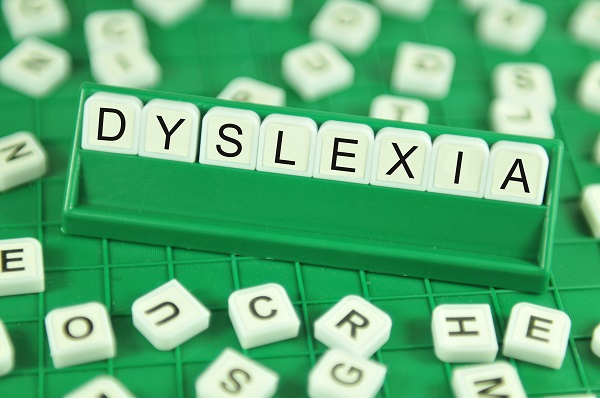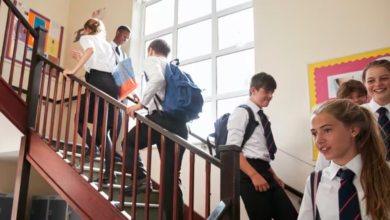Dyslexia – a classroom focus

Statistically, around one in 10 pupils is likely to have dyslexia, which means that most classes have at least 1or 2 pupils who are affected to a degree.
There are likely to be several more who, although not actually dyslexic, struggle with similar issues.
Although our awareness of dyslexia has grown substantially during the past few years, teachers are often perplexed when some children struggle with literacy, while others don’t – with exactly the same teaching approach!
Literacy is certainly not the only area which causes difficulty for dyslexic learners, however it is definitely one of the major barriers so we’re going to look at key issues and some ideas for using technology to even the playing field.
Research shows that dyslexic learners actually use different parts of the brain and many teachers assume that this means they need to be taught totally differently. Luckily that’s not the case. The principles and methodologies which are vital for struggling learners are also those which benefit all learners. Instruction needs to be explicit, multi-sensory and cumulative – and structure is the key.
Some key strategies are listed below, but one of the crucial aspects is awareness of individual needs.
Literacy teaching
- Include a strong emphasis on phonological awareness, particularly in the early stages. Check key phonological skills and develop the weaker areas. Research shows that phonological awareness is one of the key processing difficulties in dyslexia.
- Make sure your learners know how sounds are represented in writing – in other words, teach the code. Provide plenty of practice decoding and encoding regular words and teach your learners to look for the phonic cues.
- Base early literacy on word families and phonic patterns, and avoid random lists of high-frequency words which overload struggling learners. A spelling list of one-word family, plus 1-2 high-frequency words will be retained much more easily than a list of unrelated words – and it also develops an awareness of patterns in language.
- Don’t have a separate ‘spelling scheme’, but integrate spelling and other aspects of the literacy curriculum. All words need to be seen and used in context, rather than taught as isolated items.
- A structured literacy curriculum throughout the school is best so there is a set progression and all teachers know what is taught at different levels.
- Provide differentiated learning. Ideally, each learner needs to work at their own level and at the appropriate speed. Most learners with dyslexia need considerably more reinforcement than their peers and some need to work very slowly in the early stages.
- In reality, the only way to enable learners to work at their own level is to either split the class into groups, or to utilise computer/online programs such as Steps in which learners can work at their own levels.
Identify struggling learners as early as possible. Often they are not identified until they are demonstrably failing, usually 1-2 years behind their peers. By this stage, the ‘gap’ is so large that making up that ground will take far more resources than most schools can provide. Target children as soon as they show signs of struggling and give them extra input at that stage. Don’t wait until they have failed.
- Provide a variety of activities to practice spelling words, including ones which develop vocabulary and comprehension. As stated above, spelling needs to be integrated into the literacy curriculum.
- Don’t neglect handwriting. Many schools are putting handwriting onto the back burner because they think it’s no longer so relevant. But there is a growing body of research showing the developmental importance of handwriting.
Literacy in maths
- Consider the literacy difficulties. Teachers often don’t realise that some of their learners can’t actually read the questions.
- Teach maths words. Research shows that 70 per cent of dyslexics struggle with the language of maths (Chasty, 1985). Think of how many words there are which mean + (add, sum, addition, and…).
- Give examples so that your learners can follow the process, even if they’ve forgotten all of the original instructions.
General
- Give as much support as necessary to ensure your learners can read or write at their intellectual level rather than being restricted to their current literacy level. This may require the use of assistive technology, allowing them to dictate to parents or teacher aides, or letting them listen to stories, not just read them. If we restrict them to what they can read or write independently, we are not developing those crucial higher-level skills of writing, vocabulary and comprehension.
- With creative written work, mark content, not accuracy. Too much emphasis on accuracy may lead to learners only using words they are confident about spelling. Teach accuracy separately.
A final thought is to consider how we can set learners up for success rather than failure. Think what it must be like for a learner who is struggling with reading when a new topic comes up in class. All of a sudden, they are overloaded with up to a dozen new words. By the time they’ve got their head around those, the class has probably moved on. Wouldn’t it be better to use ‘homework’ creatively? Consider sending home a list of topic words which will crop up in coming weeks. A little note along the lines of: “We’re going to be doing a topic on X in two weeks’ time. These are the important words for this topic. The homework for the next two weeks is just to practise reading (not spelling) those words.” Then, when the topic comes up in class, your dyslexic learner may actually be one of the few children in the class who can read those words. And when you start the topic, how about putting a poster on the wall with all of those topic words nice and clear, so the learner can write them easily, too.
One of the crucial principles is that advocated by Neil Mackay, a leading UK expert on dyslexia. His mantra is simply: “Notice and adjust”.
Ros Lugg is a NZ and UK-trained dyslexia specialist. She is an NZCER Registered ‘C’ Grade assessor with nearly 20 years’ experience and she is the creator of the Steps and StepsWeb literacy programme, which is now used in more than 800 NZ schools and by some of the leading specialist dyslexia schools internationally.









